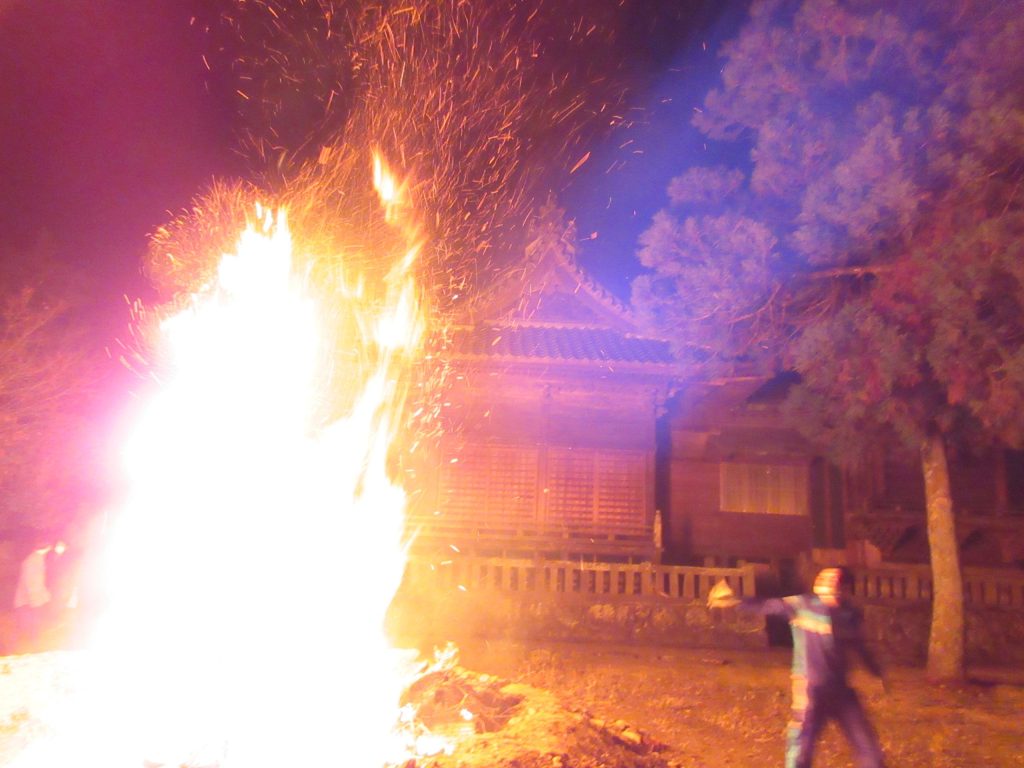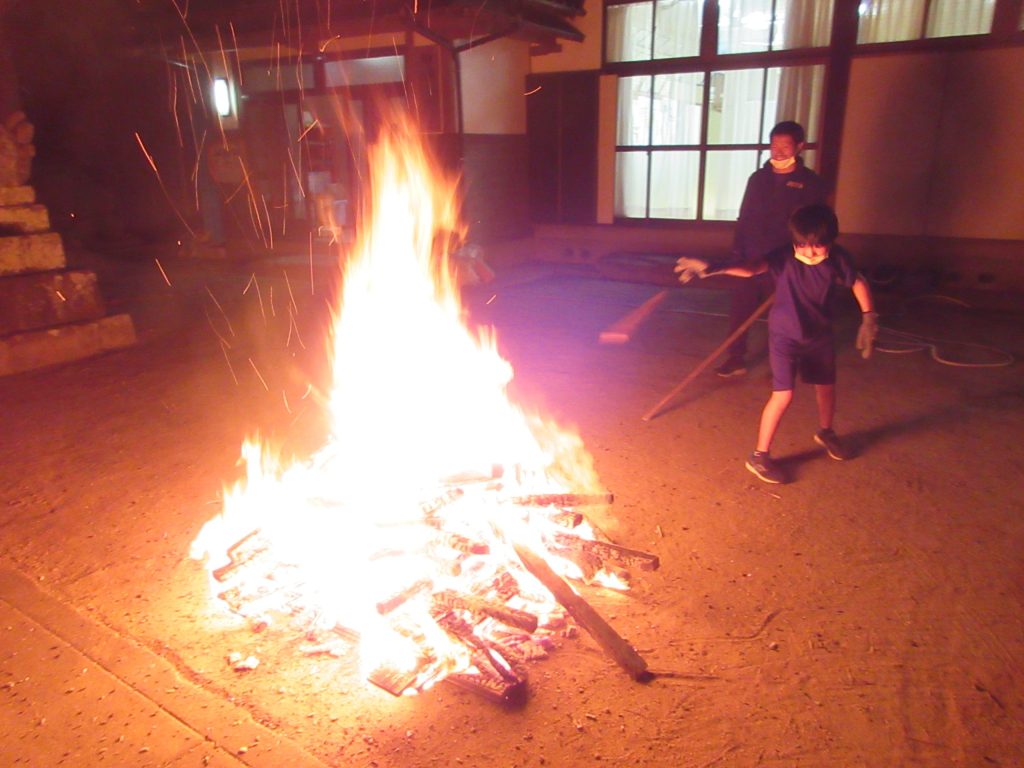
Introduction:
As the twilight descends on November 30th, a spectacle of grand bonfires erupts across the grounds of numerous shrines in Tanushimaru. Known as "Dōgomori" by the locals, these blazing bonfires serve as beacons to guide the deities back to their homes after their sojourn at Izumo Grand Shrine during the Kannazuki (the Month of Divine Absence).
A Spectacle of Fire:
The most captivating aspect of Dōgomori is undoubtedly the towering flames that illuminate the night sky. In some locations, towering piles of firewood are meticulously constructed, creating a fiery inferno that threatens to engulf the surrounding trees. This unique tradition appears to be confined to Tanushimaru and its neighboring city, Ukiha, both used to be one municipality as Ukiha-gun in the Chikugo region. The origins of Dōgomor and its historical significance remain shrouded in mystery, piquing the curiosity of those who encounter this captivating custom.



The Origins of Dōgomori:
The term “Dōgomori (literally means ‘staying in the shrine hall’)" is believed to stem from the practice of young boys devoting themselves to tending the bonfire throughout the night, ensuring its flames never extinguished. In the past, they would collect firewood, sweets, and monetary offerings called o-hana (meaning “flowers") from the community, and on the day of Dōgomori, they would gather within the shrine's main hall or the community center, solely dedicated to maintaining the fire. Due to declining birth rates and safety concerns, adults have largely taken over the responsibility in most districts. Moreover, the bonfires are now extinguished by 10 pm in most locations.
Vestiges of Tradition:
Echoing the past, children still play a significant role in certain shrines. For instance, at Moribe Tenman Shrine and Yanase Tamatare-no-Mikoto Shrine, they ignite the bonfires, while at Yanase Tamatare-no-Mikoto Shrine and Mugio Yagura Hachiman Shrine, they graciously offer o-miki (sacred sake) and sweets to worshippers, fulfilling the role of hosts. In light of the limited number of boys, girls have also been welcomed to participate in recent years.



The Significance of Children's Participation:
Children's active participation in Dōgomori through various roles holds immense value. By immersing themselves in this tradition, they gain a firsthand understanding of their place within the community. These formative experiences serve as powerful motivators, inspiring them to continue preserving this traditional event as they mature.


